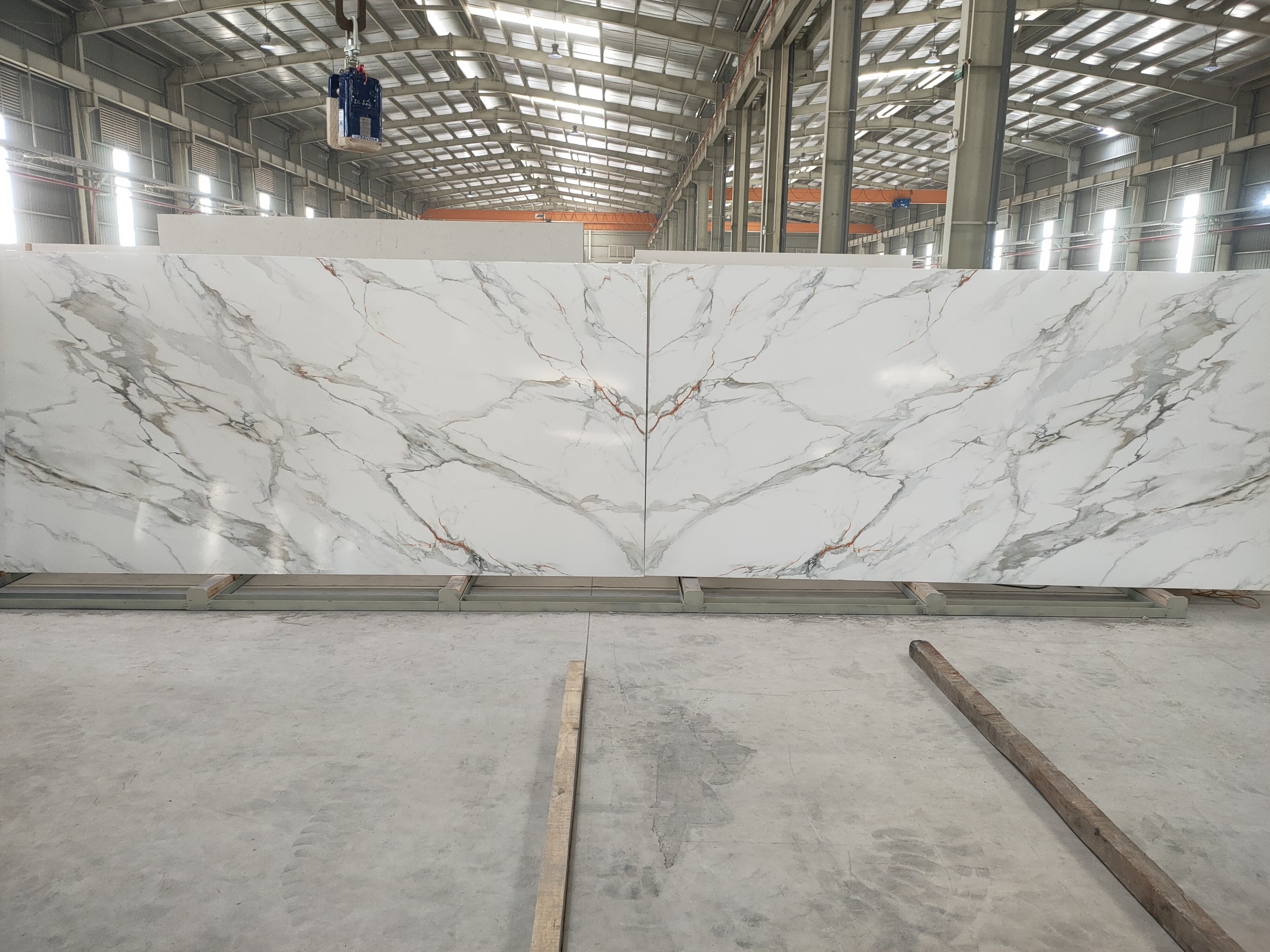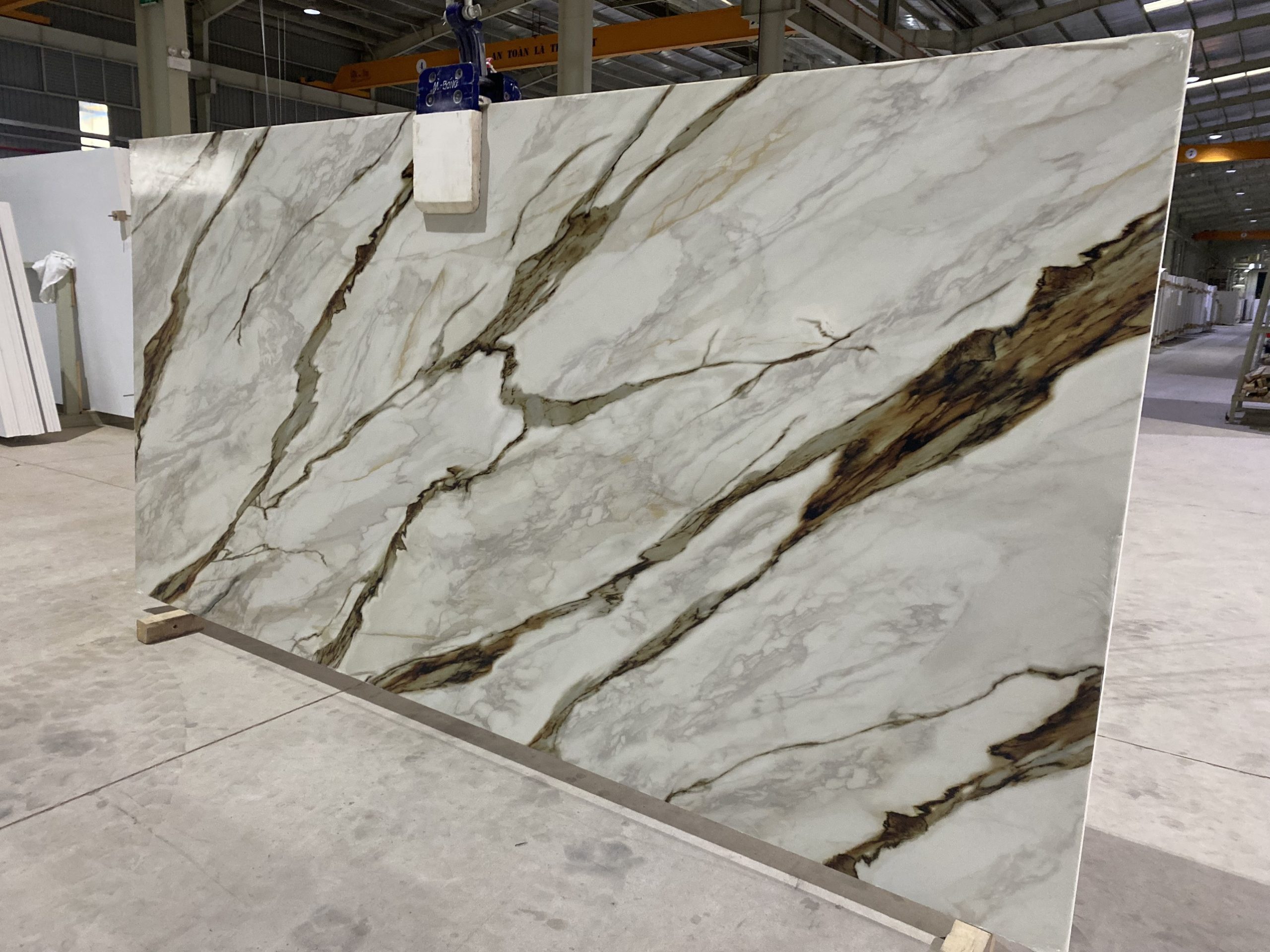What is Printed Quartz? Understanding the Modern Surface Solution
Printed quartz is a sophisticated material that combines the durability and versatility of quartz with the aesthetic appeal of high-resolution printed designs. It has become a popular choice for various applications, including countertops, flooring, and wall cladding, due to its striking appearance and practical benefits. Here’s a comprehensive look at what printed quartz is, its advantages, and its applications.

Understanding Printed Quartz
Printed quartz is a type of engineered stone made from a blend of natural quartz crystals, resins, and pigments. The process begins with mixing crushed quartz with a polymer resin to create a durable and non-porous composite material. This mixture is then poured into molds to form slabs or tiles. What sets printed quartz apart is the addition of a high-resolution printed design on the surface of the quartz. This design is typically applied through advanced printing technology, which embeds the pattern or image into the surface of the quartz.
How It’s Made
1. Material Preparation
The production of printed quartz starts with selecting high-quality quartz crystals. These crystals are crushed and mixed with resin to create the composite material. The resin binds the quartz particles together, enhancing the stone’s durability and making it non-porous. This mixture is then poured into molds and subjected to high pressure and temperature to form solid slabs or tiles.
2. Design Application
The key feature of printed quartz is its ability to showcase intricate designs. Advanced printing technology is used to apply high-resolution images, patterns, or colors onto the surface of the quartz. This process involves printing directly onto the surface or integrating the design within the resin. The result is a visually appealing surface that can mimic natural stone or feature custom designs.
3. Finishing Touches
After the design is applied, the quartz surface undergoes a series of finishing processes. This includes polishing to achieve a smooth and glossy finish, as well as sealing to enhance durability and stain resistance. The final product is a beautiful, high-quality surface that combines the visual appeal of printed designs with the practical benefits of engineered quartz.
Advantages of Printed Quartz
1. Aesthetic Appeal
One of the most significant advantages of printed quartz is its aesthetic versatility. The high-resolution printing technology allows for a wide range of designs, including patterns that mimic natural stone, abstract designs, and custom images. This versatility enables homeowners and designers to achieve a specific look that aligns with their vision, without being limited by the natural variations of stone.
2. Durability and Maintenance
Printed quartz inherits the durability of engineered quartz, making it resistant to scratches, stains, and heat. Its non-porous surface means it does not require sealing, unlike natural stone. This makes it easier to maintain and keeps it looking new for longer. Regular cleaning with mild soap and water is usually sufficient to keep it in excellent condition.
3. Consistency
Unlike natural stone, which can have significant variations in color and pattern, printed quartz offers consistency across its surfaces. This is particularly important for large installations where a uniform appearance is desired. The controlled manufacturing process ensures that each piece of printed quartz meets precise design specifications.
4. Eco-Friendly Option
Printed quartz is often considered an eco-friendly option compared to natural stone. The manufacturing process uses recycled materials and lessens the environmental impact associated with quarrying natural stone. Additionally, the durability of printed quartz means it has a longer lifespan, reducing the need for replacements and minimizing waste.
Applications of Printed Quartz
Printed quartz is versatile and can be used in various applications:
– Countertops: Its durability and aesthetic appeal make it ideal for kitchen and bathroom countertops.
– Flooring: Printed quartz is suitable for high-traffic areas due to its resistance to wear and tear.
– Wall Cladding: The material can be used for decorative wall panels in residential and commercial spaces.
– Backsplashes: It offers a stylish and easy-to-maintain option for kitchen backsplashes.
Conclusion
Printed quartz is a modern surface solution that combines the durability and practicality of engineered quartz with the visual versatility of high-resolution printing. Its ability to mimic natural stone, coupled with its easy maintenance and consistent appearance, makes it a popular choice for a wide range of applications. Whether you’re designing a new kitchen, renovating a bathroom, or upgrading commercial spaces, printed quartz offers a stylish and functional option that meets diverse design needs.

